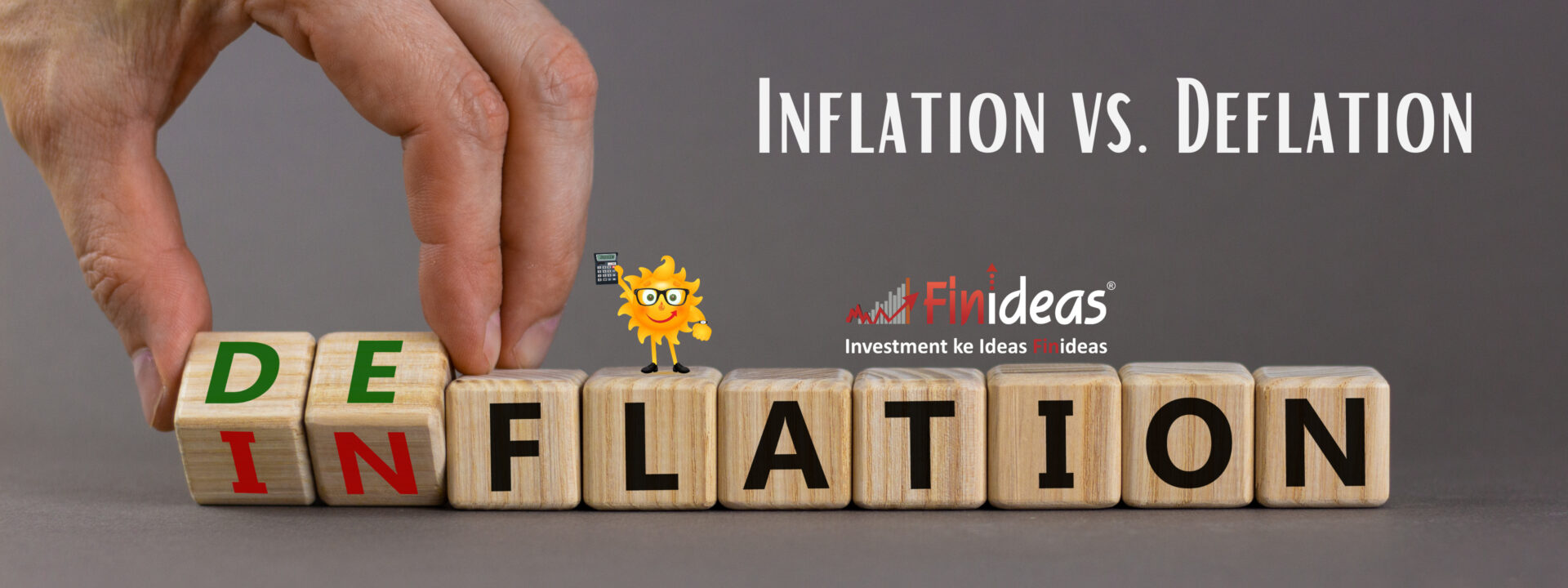Inflation vs. Deflation: A Comparative Analysis
Introduction
Inflation and deflation are two economic phenomena that impact the lives of people and the functioning of businesses in India. In this blog, we will dive deep into understanding these concepts and their implications for the Indian market. As we embark on this journey, keep in mind that these economic forces are dynamic, often influenced by a multitude of factors.
Define Inflation and Deflation
Inflation refers to the sustained increase in the general price level of goods and services over time. This means that, on average, you are likely to pay more for the same basket of goods and services year after year. For instance, if a cup of coffee costs INR 50 today and INR 55 next year, you are experiencing 10% annual inflation.
Conversely, deflation is the opposite phenomenon, where prices tend to decrease over time. In a deflationary scenario, your INR 50 cup of coffee could cost INR 45 the following year.
Causes of Inflation and Deflation in India
Inflation in India:
- Demand-Pull Inflation: This occurs when demand for goods and services exceeds their supply, driving prices upward. In India, factors like rising middle-class consumption, urbanization, and increased disposable income can fuel demand-pull inflation.
- Cost-Push Inflation: When the cost of production rises due to factors such as increased raw material costs or labor wages, it can lead to higher prices for goods and services. Fuel price hikes and supply chain disruptions can contribute to cost-push inflation.
Deflation in India:
- Decreased Consumer Spending: During economic downturns or times of uncertainty, consumers may cut back on spending. When demand falls sharply, businesses often reduce prices to stimulate sales, leading to deflationary pressures.
- Technological Advancements: In some cases, deflation can result from rapid technological advancements that lead to falling production costs. For instance, the tech sector in India has experienced deflationary effects due to increased automation and competition.
Effects on the Indian Economy
Inflation in India:
- Impact on Fixed-Income Earners: Inflation erodes the purchasing power of fixed-income earners, such as pensioners and those with fixed interest rate investments.
- Positive Impact on Debtors: People with fixed-rate loans benefit from inflation as they pay back loans with less valuable currency over time.
- Business Investments: Moderate inflation can encourage business investments, as entrepreneurs may perceive higher potential profits.
Deflation in India:
- Debt Burden: While falling prices may seem beneficial to consumers, it can increase the burden of debt, as the real value of loans increases.
- Lower Business Investment: Deflation can discourage businesses from investing, as they anticipate lower future revenues, leading to economic stagnation.
- Unemployment: Reduced business activity and investments may lead to job losses, as companies may cut costs during deflationary periods.
Historical Trends
Analyzing historical trends in India can provide valuable insights into how inflation and deflation have affected the economy. For example, India experienced high inflation rates during the early 2010s, driven by factors like fuel price hikes and food inflation. In contrast, the COVID-19 pandemic led to a brief deflationary phase due to reduced economic activity.
Coping Strategies for Consumers


During periods of inflation and deflation, consumers can take several steps to manage their finances:
- Diversify Investments: Diversifying your investment portfolio can help mitigate risks associated with economic fluctuations.
- Budget Wisely: Creating a budget and tracking expenses can help you maintain financial stability during changing economic conditions.
- Monitor Interest Rates: Stay informed about changes in interest rates, as these can impact the cost of borrowing and returns on savings.
- Emergency Fund: Maintain an emergency fund to cover unexpected expenses during economic uncertainties.
If you want to beat inflation you must know about Index Long Term Strategy on our website or you can contact us.
Conclusion
In conclusion, inflation and deflation are complex economic forces that have a profound impact on the Indian market. Understanding their causes, effects, and management is crucial for individuals, businesses, and policymakers. The Indian economy’s resilience and adaptability continue to shape the dynamics of inflation and deflation, making it imperative to stay informed and prepared for the ever-changing economic landscape.
What do you prefer inflation or deflation? Comment Down Below
Happy Investing!
This article is for education purpose only. Kindly consult with your financial advisor before doing any kind of investment.

